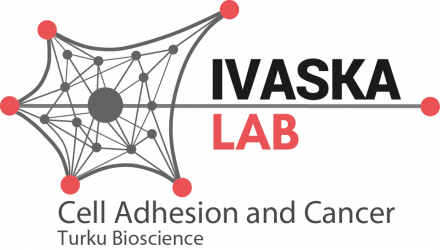A Strong Contractile Actin Fence and Large Adhesions Direct Human Pluripotent Colony Morphology and Adhesion by Elisa Närvä et al.
Stem Cell Reports. 2017 Jul 11;9(1):67-76. doi: 10.1016/j.stemcr.2017.05.021. Epub 2017 Jun 15.
ABSTRACT
Cell-type-specific functions and identity are tightly regulated by interactions between the cell cytoskeleton and the extracellular matrix (ECM). Human pluripotent stem cells (hPSCs) have ultimate differentiation capacity and exceptionally low-strength ECM contact, yet the organization and function of adhesion sites and associated actin cytoskeleton remain poorly defined. We imaged hPSCs at the cell-ECM interface with total internal reflection fluorescence microscopy and discovered that adhesions at the colony edge were exceptionally large and connected by thick ventral stress fibers. The actin fence encircling the colony was found to exert extensive Rho-ROCK-myosin-dependent mechanical stress to enforce colony morphology, compaction, and pluripotency and to define mitotic spindle orientation. Remarkably, differentiation altered adhesion organization and signaling characterized by a switch from ventral to dorsal stress fibers, reduced mechanical stress, and increased integrin activity and cell-ECM adhesion strength. Thus, pluripotency appears to be linked to unique colony organization and adhesion structure.
PMID:28625538 | PMC:PMC5511101 | DOI:10.1016/j.stemcr.2017.05.021
